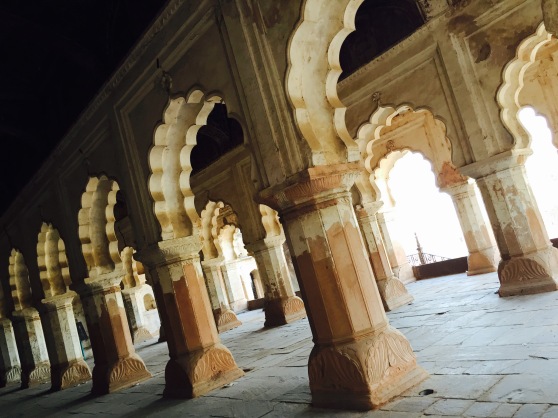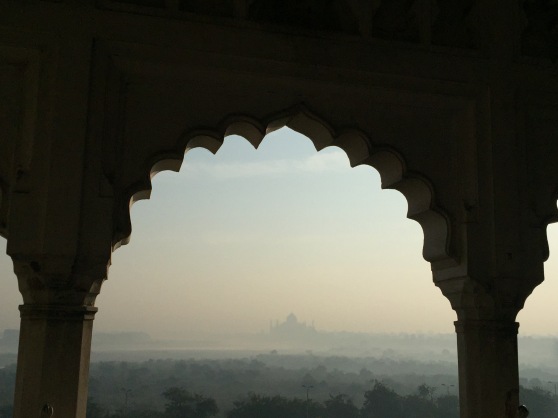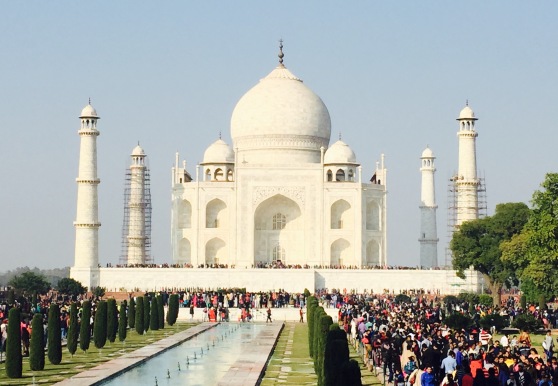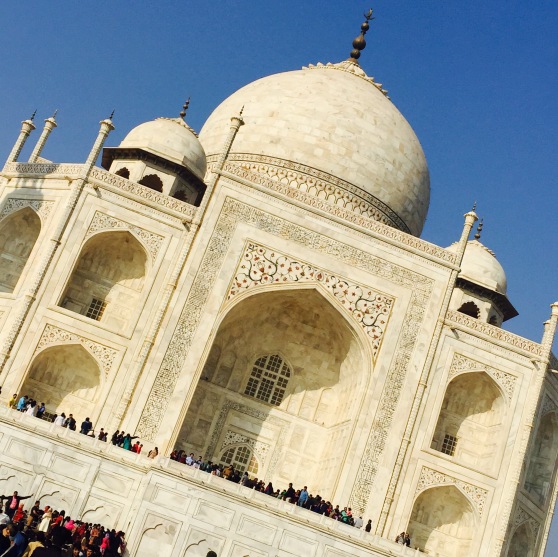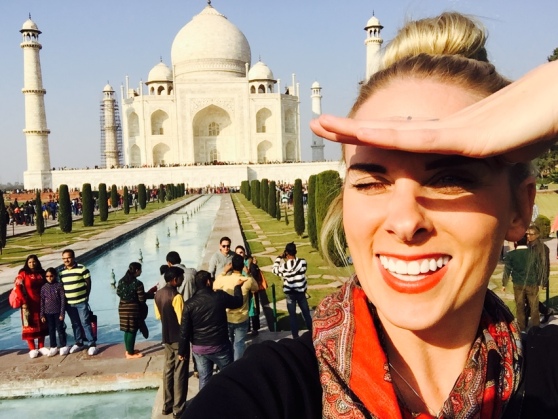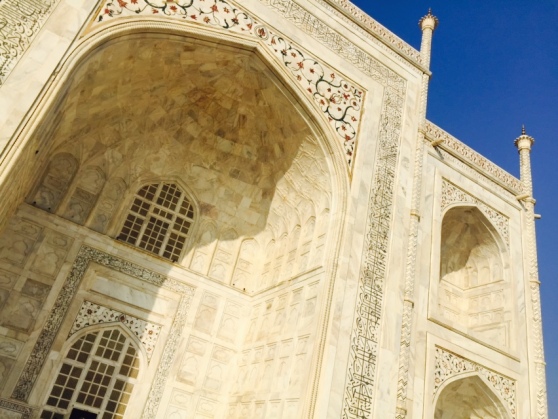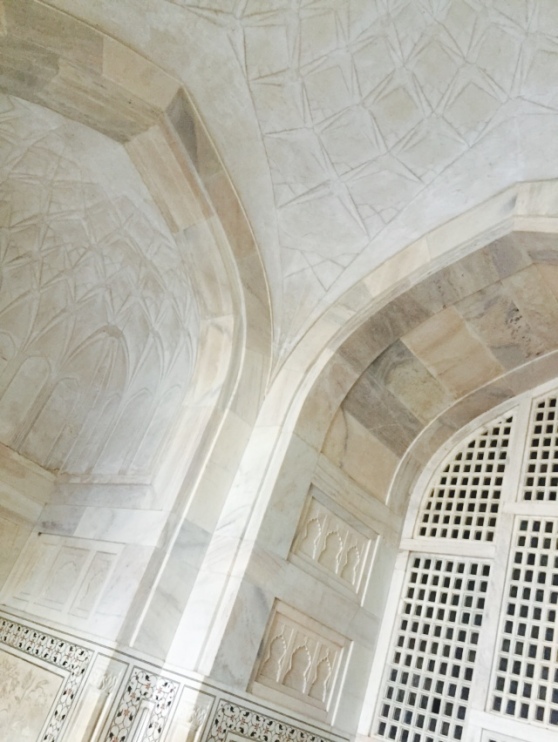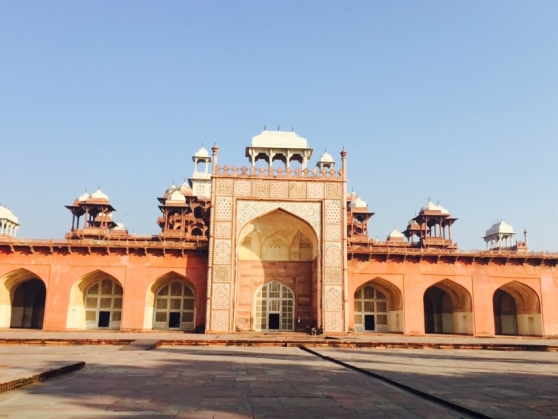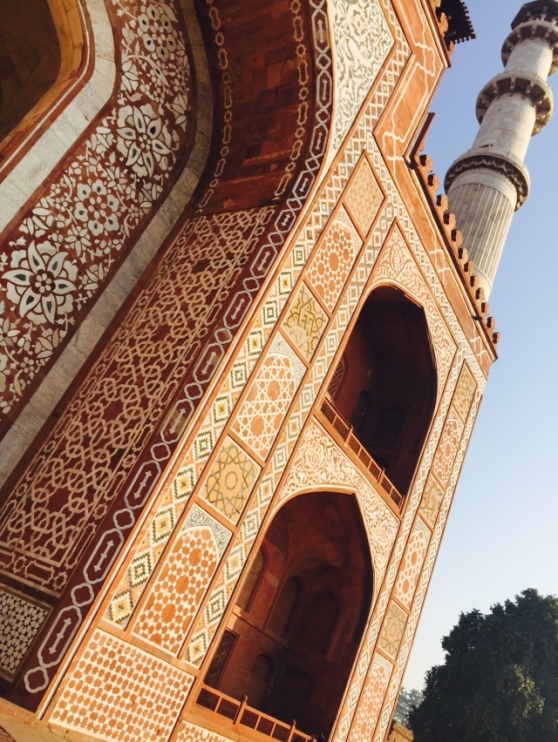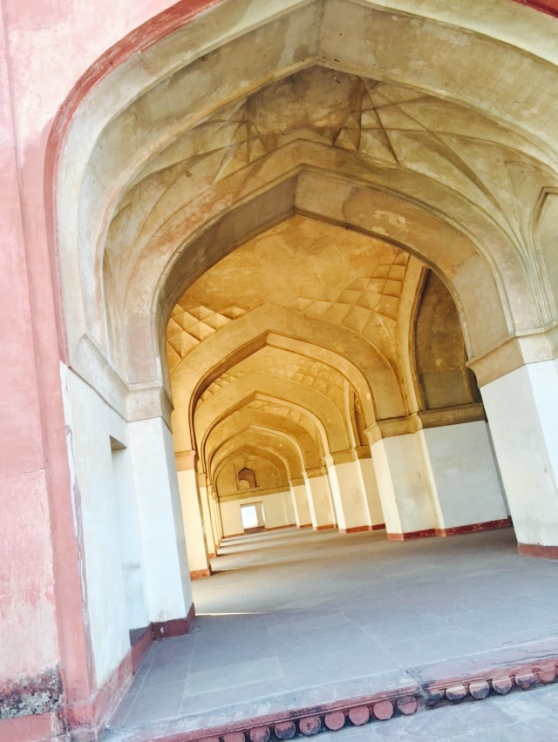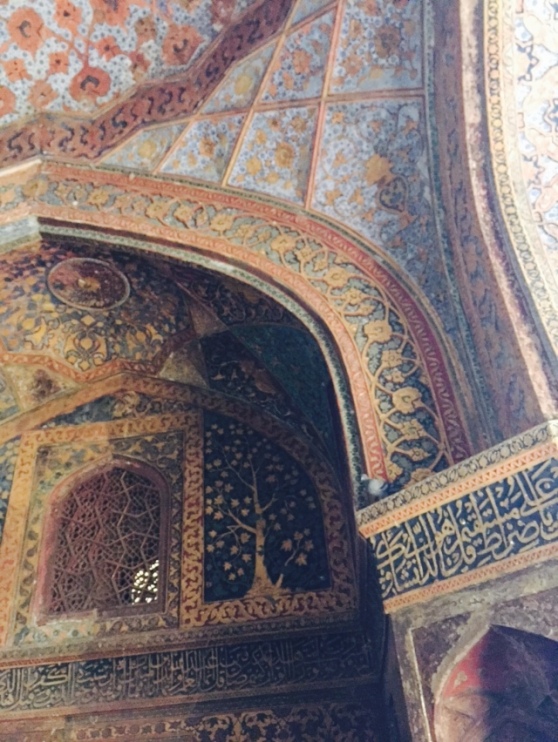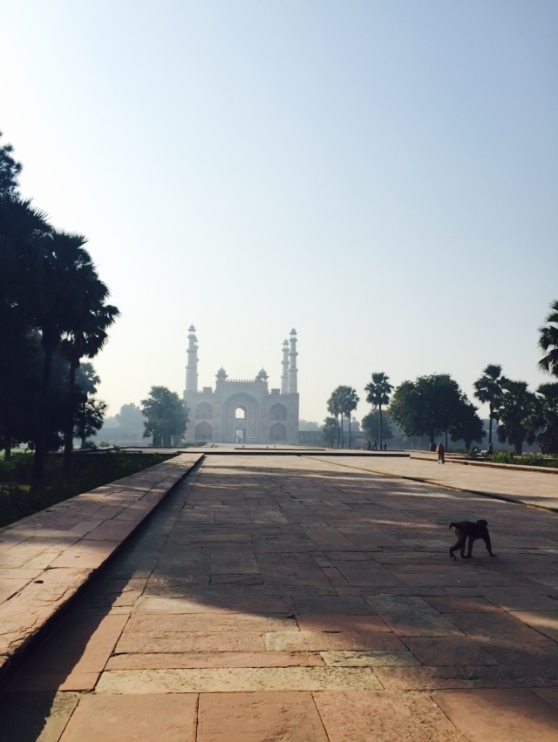Next stop was Agra, we travelled by train from Delhi for about 4 hours in 1st class, which was pretty reasonable and we got breakfast included – which was a freshly made omelette! What wasn’t brilliant, was the 5am start, but hey ho. We arrived in Agra and got shipped straight off to the Red Forte.
The Red Forte is a walled city, mentioned historically for the first time in 1080AD when someone captured it. The first Sultan of Delhi – Sikander Lodi – moved to Agra, lived in the fort and ruled from there. Agra then assumed the importance of the second capital. Sikander died in 1517 and his son then ruled from the fort, he held it for about a decade until he was defeated in 1526. Various emperors were crowned in the fort and it was fought over and lost by armies, Mughals and kings alike.
It was then ruled by one of the most beloved of rulers in India, Akbar the Great and then by his grandson – one of the most infamous Mughal emperors – Shah Jahan (who had the Taj Mahal built for his wife). Shah Jahan tended to build in marble and so destroyed some of the red stone interior of the fort and replaced them with marble, such as a tower with a balcony to view the Taj Mahal.
After lunch we went to the Taj Mahal, our guide didn’t really give us a lot of information so I have surmised it from the Australian-Indian girl on our trip and the internet. Unlike all the pictures you see on the internet of the Taj, where it looks desolate and remote, it is actually swarming with tourists and has a load of shops outside to buy souvenir tat, camal rides and horse and carts flock the streets – somewhat distracting from the beauty of the place. I think sunrise would definitely be the optimum time to go for the best view and photographs – even I would have got up early for that one.
The Taj, other than just looking fairly magnificent, becomes more beautiful when you understand its backstory. It was built out of love and Indians love it all the more because of it. Shah Jahan (the emperor who demolished some of the red fort and added his beloved marble) was head over heels in love with his wife Mumtaz Mahul, a Persian muslim princess who he met at the age of 14. They married five years later in 1612. Mumtaz died after giving birth to their 14th child and it is alleged that Mumtaz requested a couple of wishes from Shah Jahan on ereath bed, which included no more wives, no more children and a building to commemorate her. Apparently, Shah complied with these – and thus the Taj was built!
And so, the Taj was built as a tribute to Mumtaz. It began construction in 1631 and took 22 years, over 22,000 labourers and 1,000 elephants – carrying marble and other materials from all over India and Asia. The Taj is said to have cost 32 million rupees – back then – which was an exorbitant amount.
Soon after the completion of the Taj, Shah Jahan was deposed by his own son, who thought his father a little bit mad and a liability to the country, what with his penchant for spending astronomical amounts on buildings. Reputedly, his father had planned to build an exact replica of the Taj, in black, over the river from the white Taj, where he would be laid when he died. Shah was locked in the Red Fort in Agra for the remainder of his life, and lived imprisoned in the marble section he’d had built, with views of the Taj Mahal and his entombed wife. When Shah Jahan died, he too was buried in the Taj along with Mumtaz.
At the end of the 19th century, British Lord Curzon ordered a restoration project of the Taj to restore what was lost during the Indian rebellion of 1857 and the effects from the chiselling out of precious gem stones which had adored the interior walls. The lawn in place today was also a British addition from this time.
We spent about 3 hours at the Taj, on a special VIP tourist ticket, which cost about £7, compared to the local fee of about 20p. This enables you to cut queues at entry and to the interior of the building. It is quite entertaining watching the locals pretend to blag a VIP ticket and the guards getting very irate in response. At one point, I lost my ticket, but simply being white and foreign allowed me to bypass all the queues without showing anyone anything.
Another building we visited while in Agra was Sikandra. It houses the mortal remains of the Mughal Emperor Akbar the Great. He built the tomb during his lifetime, to ensure he had a peaceful resting place. However, the topmost portion of mausoleum in marble was constructed by his son, Jahangir.
The shape of tomb is pyramidal and consists of five storeys. The entire tomb is constructed of red sandstone but the top storey is constructed in white marble. The ground floor is surrounded by cloisters except at the centre on the southern side. These cloisters are divided by massive arches and piers divisible into many bays – great for photographing.
There are sections of the building which are divided up in to perfectly symmetrical squares, with domed ceilings, if you stand facing the wall in each corner and talk, you can hear and talk to the person directly behind you – the vibrations travel up in to the domed roof and down to the person on the opposite side. Hard to describe and quite radical when you are there. Like an old coconut phone, but without the coconut.
The highlight for me were the gardens, which were not only full of deer, monkeys and chipmunks but more importantly, provided a bit of peace and quiet from the constant noise from vehicles and people.


